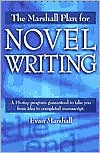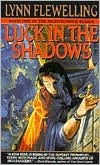 A few weeks ago I completed the 140k+ first draft of my new WIP. Since then, I've gained some distance from the story, and a more objective perspective on it. At first I had planned on editing the first draft. Now I've determined that it would be better to rewrite it.
A few weeks ago I completed the 140k+ first draft of my new WIP. Since then, I've gained some distance from the story, and a more objective perspective on it. At first I had planned on editing the first draft. Now I've determined that it would be better to rewrite it.The problem with the first draft is quite simple: too much "show" and not enough "tell". I wrote too quickly, and failed to fully immerse myself in the story. As the work stands, the Reader will simply not experience the story at a level of depth and immersion that will make for rewarding reading. The story itself is rich enough, interesting enough -- I just need to bring it to life on the page with a more vivid sense of detail -- and not the kind of detail you can "edit in". In essence, I need to more fully realize the true voice of the story.
This sounds like disappointing news but it's not. The first draft was NOT a waste of time. I had the opportunity to work through the story which helped me to better learn it. I can use that draft to guide me in the rewrite, and I can even borrow some chapters and pieces directly from it, since some of it is quite good. Having that draft behind me, plus my notes on hand, I'll feel much more confident that I can finish this new draft and make it better.
I've already started rewriting, and have about 1.5 chapters done. I'm not going to set any definitive word count goals or chapter completion goals at this time. I'll go slow and write, experience, edit, tinker, improve upon, and move forward, then backward, then forward again. The only requirement is that I keep it moving, and that I try to finish about 3 or 4 chapters per week. However much I write will be fine, as long as it's of the quality that I'm looking for.
I know what I want this story to look like when it's finished, how I want it to read. I'm going to start fresh and immerse myself in it much more than I did during the first draft, and do my best to bring the story to life. My only concern is to keep moving, so I don't wear myself out. I know I have a limited amount of time to complete this draft before burn-out sets in. I'll try to remember to push on when I need to.
Putting on the kettle, since it'll be another long haul,
Adrian
P.S. Congratulations to all those successful Nanowrimo participants!








































